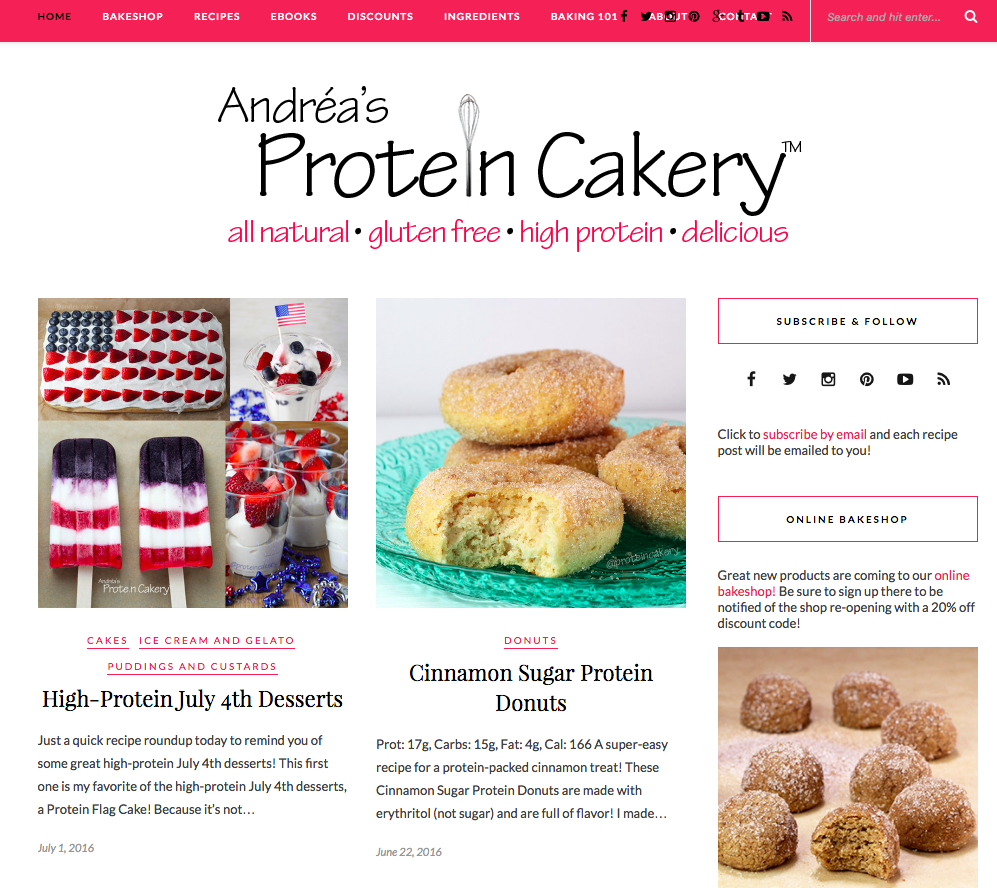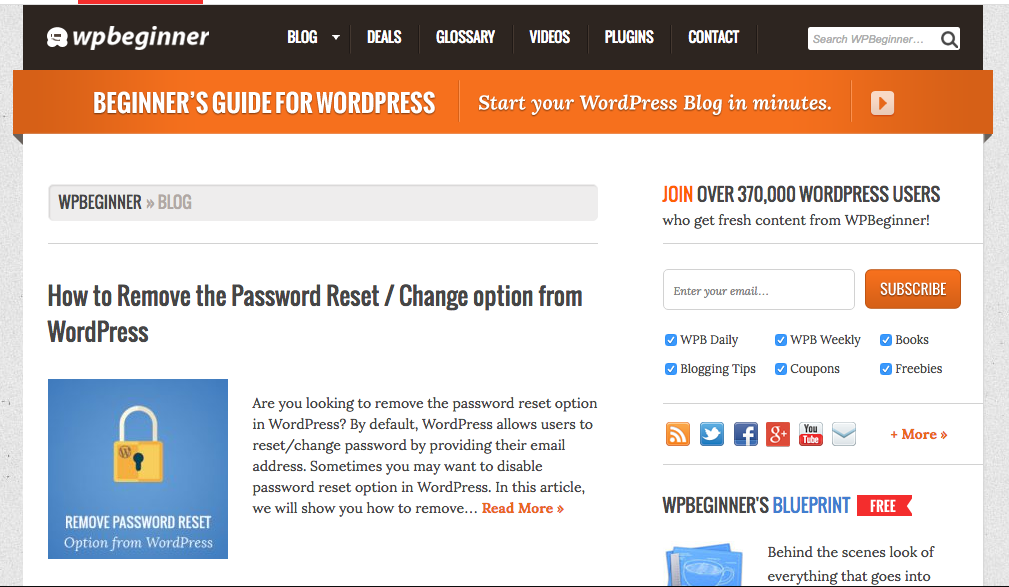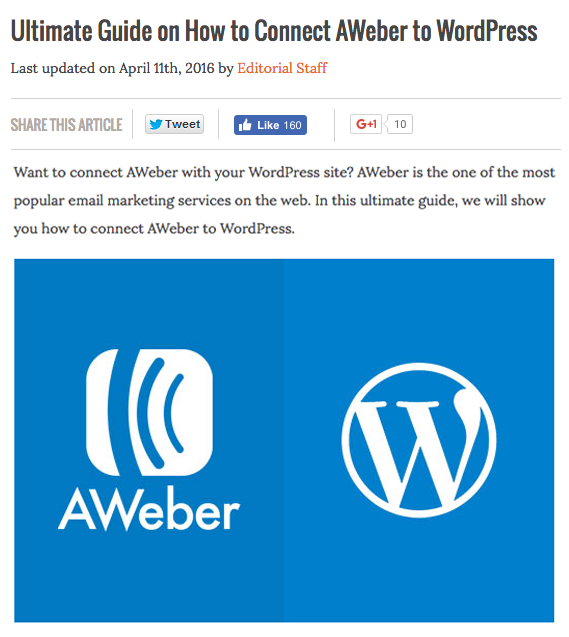The Do’s And Don’ts of Affiliate Marketing
By Zach Cannon July 8, 2016
When you love a product or service, sometimes it’s hard to keep it to yourself. You want to tell others about it, get them to buy it, and revel in its AWesomeness with you.
Now imagine if you could do that and earn commission as a result.
When you join an affiliate marketing program, you can earn commission when someone you refer purchases that company’s product or service – which is perfect if you’re looking to monetize the traffic of visitors that goes to your blog, social channels, email and more.
Before you start Googling affiliate marketing programs, you want to make sure you understand what exactly you’re signing up for. Too often, many join an affiliate program without really knowing what they’re getting into. And even more frequently than that, they have the mindset that anyone can do it and it requires little work to be successful.
The truth is, it is something anyone can do, and see results with. But it takes time and strategy to get to that point. To help you identify the best ways to find affiliate marketing success, I’ve outlined some specific do’s and don’ts to guide you towards becoming an affiliate pro.
The Affiliate Marketing Do’s
Do Stick to Your Niche
A common mistake affiliate marketers make is trying to promote too many products or services in an attempt to make more money, regardless of whether or not they’ve used it before. This may work for more established affiliates, but if you’re just starting out, it’s better to focus on a few products that are relevant to your site and brand.
Focusing on relevant products makes it easier to make quality referrals because there’s a nice overlap between your audience and the product you’re promoting. If you’re a fitness blogger, for example, it wouldn’t exactly fit in with the rest of your content if you started promoting video games and electronics that aren’t applicable to your niche. Instead, you might find a company whose products focus on protein powders, vitamins, workout equipment, etc.
A great example of a blogger sticking to their niche is Andréa at ProteinCakery. After struggling to find recipes for protein packed desserts when she started bodybuilding, Andréa decided to create a recipe resource of her own.

As you can tell from her homepage, all of Andréa’s posts focus on all-natural, high-protein, delicious recipes. She has a niche, and she sticks to it! Whenever she calls out an ingredient that’s associated with an affiliate program she’s involved in (such as a protein powder), she hyperlinks that word with an affiliate link back to product’s website.
Do Create Compelling Content
One common trait among the majority of successful affiliates? They usually have a steady traffic of people who continue to go back to their website. And the main reason why they have tons of traffic returning to their site is because they create compelling content their audience can’t get enough of.
As a general best practice, you should always aim to create valuable and engaging content for your visitors – whether it’s a blog post, video, or email. This helps them trust you, and shows that you’re a reliable source for information. When you do that regularly, it becomes a lot easier to start promoting a product or service as part of an affiliate marketing program.
When you create content that links back to a company of which you’re an affiliate, be sure to use real examples and give advice on how to be successful using whatever you’re promoting.
Here’s a great example of this in action from one of our own affiliates, WPBeginner:
As you can see, their site is packed with useful tips and tutorials for people building wordpress sites, which keeps readers coming back for more!
And when they write about email marketing, AWeber naturally fits in with the rest of their content:
Since WPBeginner has already provided valuable content to their readers, they can trust their audience will respond well to their suggestions for email marketing platforms.
Do Place Links in Relevant Locations
At first glance, this may seem like an obvious tip. In order to get credit for a customer referral, you need to have links for them to click on.
But you’d be surprised at the number of times I’ve visited a blog post or received an email that gives a glowing endorsement of a product or service, but doesn’t include enough links back to the company’s website. Sure, the brand’s name is mentioned throughout the content. Yet, that brand name is not hyperlinked with an affiliate link; instead, I need to scroll all the way to the bottom of the page or email in order to find a clickable link.
Affiliates should try their best to make it easy for their readers to easily navigate to a brand’s site via an affiliate link. The more people click on that link, the better for everyone because 1) the more people you refer to a company, the more commissions you can potentially earn, and 2) those you’re referring will be able to improve their lives in some way thanks to the product you recommend.
Pro Tip: Be sure to link relevant keywords throughout a blog post or email with your affiliate link, as a potential customer might not make it to the end of your blog post to find it.
Do Be Patient
Sales aren’t going to come pouring in overnight. It could take months of continual testing and promotion in order to reap the benefits of affiliate commission. Even simply finding the most effective places to promote your affiliate link can take time, and lots of testing.
Let’s say you decide to try testing your affiliate link in your email signature. After a few emails, you learn it’s not yielding the results you were hoping for. This might lead you to remove it and focus your efforts on promoting the link in social posts or on your blog.
You might even find that different placements of affiliate ads on your website can yield more referrals than others. Or that your audience responds better to video content that promotes your affiliate link instead of blog posts. Only testing and time will tell.
Do Work With Your Affiliate Manager to be Successful
When you sign up to become an affiliate, chances are you’ll be paired up with an affiliate manager who oversees the program. You might also receive a variety of resources that are designed to help you make referrals and be successful.
One tip I have for you? Use all the tools at your disposal, including banner ads, video ads and any other content provided by the brands you’re promoting. And be sure to leverage the affiliate managers as well. They’re often available to help with best practices and provide insightful ways on how to convert your traffic into sales.
The Affiliate Marketing Don’ts
Don’t Be Spammy
If you want to maintain a steady flow of traffic returning to your site, avoid posting spammy content. Now I know you might be thinking, “I would never do such a thing!” However, what gets labeled as spam goes beyond the usual “make money fast” kind of copywriting. So what else falls under this umbrella? Any content that is irrelevant to your audience, or that your audience isn’t expecting.
This ties back to what I wrote earlier about sharing relevant content. If you’re a fitness coach, you want to promote content that’s relevant to your industry like protein powders, equipment, and healthy foods. The moment you stray from that and talk about the latest cool video game, the moment your audience begins to see you as spam.
Often times, being spammy will result in large amounts of traffic and poor conversion rates. This could also cause companies to become hesitant to work with you, or even remove you from their program.
Don’t Be Salesy
Nobody wants to visit a site that constantly tries to sell them a product or service. Would you?
To promote a product without coming across as salesy or spammy, focus on being educational. Telling your readers about your success story with a product or service will be more likely to result in a sale than simply saying it’s the best and everyone should use it.
The more you can show the value of something, the more you can convince them to see it for themselves, too.
Don’t Violate the Affiliate Terms of Service
Before signing up for an affiliate program, you’ll probably be required to agree to an affiliate terms of service document. This agreement will lay the ground rules for what you can and can’t do when promoting a company.
Typically, these include guidelines around promoting their competitors in conjunction with their brand or referring your own sales. Be sure to follow these agreements and to reference them any time you’re unsure of whether or not to do something.
For example, affiliates will often bid on an advertiser’s branded keywords on search engines such as Google. If you’re going to partake in this type of activity, ensure it’s OK first. This can often increase the brand’s costs in paid search and take away from traffic already headed to their site.
If you choose to violate these terms, you’ll receive an email from the company or affiliate program manager that tells you to stop what you’re doing. If you fail to comply, your commissions could be reversed, or worse, you could be removed from their affiliate program entirely.
Becoming a Successful Affiliate
I hope these tips have empowered you to become a successful affiliate! Being an affiliate does require some work on your end, but the benefits can be extremely rewarding.
Have other tips that I didn’t mention in this post? Share your thoughts in the comment section below!
 87% off ends soon!
87% off ends soon! 



